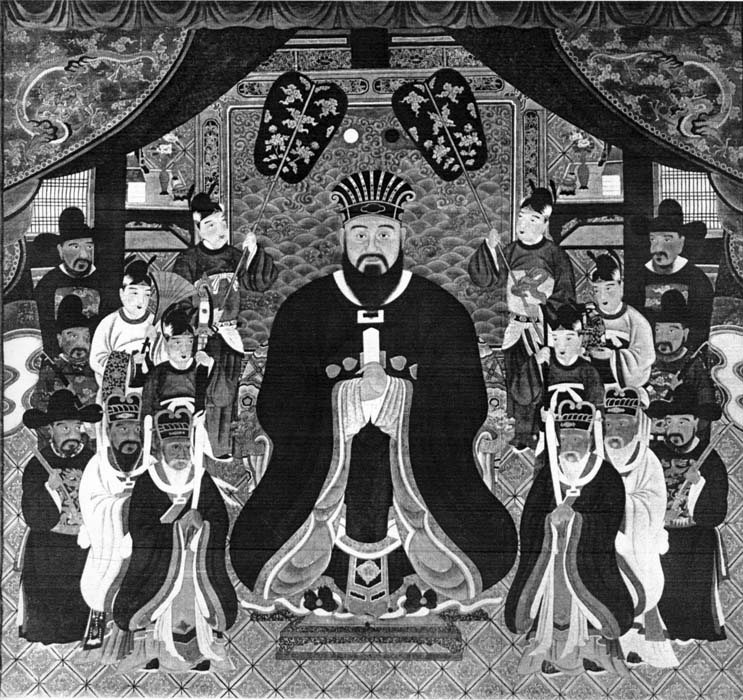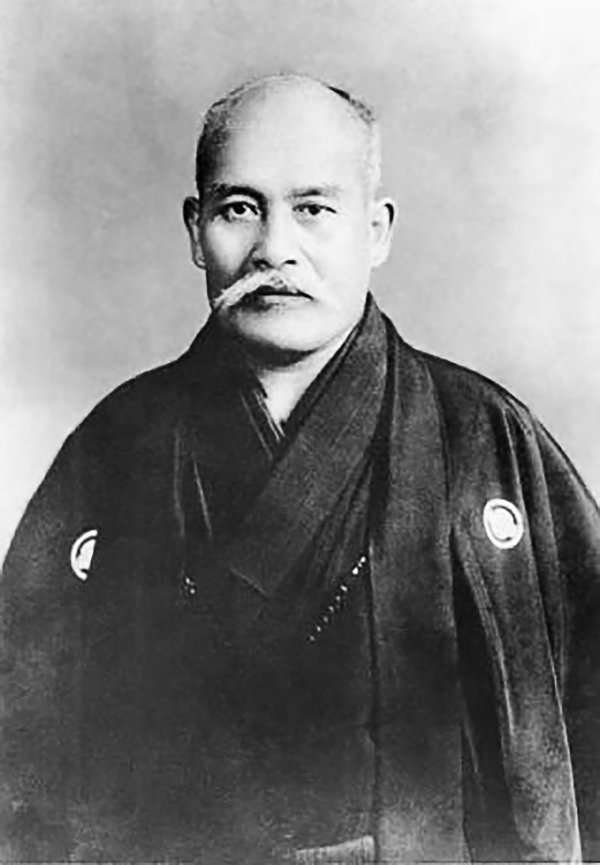|
Yoseikan Budo
was the name given to Minoru Mochizuki's dojo built in November 1931 in Shizuoka, Japan. The Dojo The brother and friends of Master Minoru Mochizuki built this dojo for him while he was recovering from pleurisy and pulmonary tuberculosis. When the dojo was built, a friend of the Mochizuki family (a philosophy teacher) called it ''Yōseikan''. Mochizuki immediately adopted the name since it means "the place to cultivate truth/righteousness". It reflected his teacher's ideals and it reinforced the positive attitude of "Mutual welfare and prosperity" he had always promoted. The official opening of the dojo was held in November 1931 and many dignitaries from Tokyo, including Morihei Ueshiba, Admiral Isamu Takeshita, and General Makoto Miura attended. It had to ... [...More Info...] [...Related Items...] OR: [Wikipedia] [Google] [Baidu] |
Minoru Mochizuki
was a Japanese martial artist who founded the dojo Yoseikan. He was a 10th dan in Aikido, 9th dan in Jujutsu, 8th dan in Iaido, 8th dan in Judo, 8th dan in Kobudo, 5th dan in Kendo, 5th dan in Karate, and a 5th dan in Jojutsu. Mochizuki was one of the direct students of Judo founder Jigoro Kano, Aikido founder Morihei Ueshiba and Gichin Funakoshi, founder of Shotokan Karate. Believing that the martial arts had become distorted by specialization into separate disciplines or transformed into sports, Mochizuki achievement was to assemble back the major techniques of the Japanese martial tradition into a single structure, as it was once practised. He oversaw the development of the system from his home in Shizuoka, Japan, where his dojo, the Yoseikan, was often visited by martial arts practitioners from all over the world. Early life On April 7, 1907, Mochizuki was born in Shizuoka, Japan. Mochizuki, began by training in kendo at the age of five, at his grandfather's dojo i ... [...More Info...] [...Related Items...] OR: [Wikipedia] [Google] [Baidu] |
World War II
World War II or the Second World War (1 September 1939 – 2 September 1945) was a World war, global conflict between two coalitions: the Allies of World War II, Allies and the Axis powers. World War II by country, Nearly all of the world's countries participated, with many nations mobilising all resources in pursuit of total war. Tanks in World War II, Tanks and Air warfare of World War II, aircraft played major roles, enabling the strategic bombing of cities and delivery of the Atomic bombings of Hiroshima and Nagasaki, first and only nuclear weapons ever used in war. World War II is the List of wars by death toll, deadliest conflict in history, causing World War II casualties, the death of 70 to 85 million people, more than half of whom were civilians. Millions died in genocides, including the Holocaust, and by massacres, starvation, and disease. After the Allied victory, Allied-occupied Germany, Germany, Allied-occupied Austria, Austria, Occupation of Japan, Japan, a ... [...More Info...] [...Related Items...] OR: [Wikipedia] [Google] [Baidu] |
Yoseikan Aikido
Yoseikan Aikido (養正館合気道 ''Yoseikan Aikidō'') is the aikido taught at the Yoseikan Dojo in Shizuoka, Japan, under the direction of Minoru Mochizuki (望月 稔 ''Mōchizuki Minoru'', 1907–2003). Mochizuki was a direct student of aikido's founder, Morihei Ueshiba. He was an uchi deshi (live-in student) from around November 1930, to around August 1931. Mochizuki maintained contact with Ueshiba until the latter's death in 1969. In the 1970s Yoseikan Aikido was formally organised into Yoseikan Budo along with the other arts Mochizuki had studied and mastered, including judo, karate, Tenshin Shoden Katori Shinto-ryu, jujutsu, kobudo, iaido, kendo, jojutsu, and Mongolian kempo. However, some dojos still exist throughout the world that maintain their art as Aikido, and as such, still refer to it as Yoseikan Aikido, or Yoseikan Aikijujutsu/ Aikijutsu. Summary Traditionally Yoseikan Aikido contains all the aspects present in other aikido schools, for example ''ai'' ... [...More Info...] [...Related Items...] OR: [Wikipedia] [Google] [Baidu] |
Yoseikan Budo
was the name given to Minoru Mochizuki's dojo built in November 1931 in Shizuoka, Japan. The Dojo The brother and friends of Master Minoru Mochizuki built this dojo for him while he was recovering from pleurisy and pulmonary tuberculosis. When the dojo was built, a friend of the Mochizuki family (a philosophy teacher) called it ''Yōseikan''. Mochizuki immediately adopted the name since it means "the place to cultivate truth/righteousness". It reflected his teacher's ideals and it reinforced the positive attitude of "Mutual welfare and prosperity" he had always promoted. The official opening of the dojo was held in November 1931 and many dignitaries from Tokyo, including Morihei Ueshiba, Admiral Isamu Takeshita, and General Makoto Miura attended. It had to ... [...More Info...] [...Related Items...] OR: [Wikipedia] [Google] [Baidu] |
Karate
(; ; Okinawan language, Okinawan pronunciation: ), also , is a martial arts, martial art developed in the Ryukyu Kingdom. It developed from the Okinawan martial arts, indigenous Ryukyuan martial arts (called , "hand"; ''tī'' in Okinawan) under the influence of Chinese martial arts. While modern karate is primarily a striking art that uses punches and kicks, traditional karate training also employs Throw (grappling), throwing and joint locking techniques. A karate practitioner is called a . Beginning in the 1300s, early Chinese martial arts, Chinese martial artists brought their techniques to Okinawa. Despite the Ryukyu Kingdom being turned into a puppet state by Japanese samurai in 1609, after the Invasion of Ryukyu, its cultural ties to China remained strong. Since Ryukyuans were banned from carrying swords under samurai rule, groups of young aristocrats created unarmed combat methods as a form of resistance, combining Chinese and local styles of martial arts. Training emph ... [...More Info...] [...Related Items...] OR: [Wikipedia] [Google] [Baidu] |
Judo
is an unarmed gendai budō, modern Japanese martial art, combat sport, Olympic sport (since 1964), and the most prominent form of jacket wrestling competed internationally.『日本大百科全書』電子版【柔道】(CD-ROM version of Encyclopedia Nipponica, "Judo"). Judo was created in 1882 by Kanō Jigorō () as an eclectic martial art, distinguishing itself from its predecessors (primarily Tenjin Shin'yō-ryū, Tenjin Shinyo-ryu jujutsu and Kitō-ryū jujutsu) due to an emphasis on "randori" (, lit. 'free sparring') instead of alongside its removal of striking and weapon training elements. Judo rose to prominence for its dominance over Kodokan–Totsuka rivalry, established jujutsu schools in tournaments hosted by the Tokyo Metropolitan Police Department (警視庁武術大会, ''Keishicho Bujutsu Taikai''), resulting in its adoption as the department's primary martial art. A judo practitioner is called a , and the judo uniform is called . The objective of competitive ju ... [...More Info...] [...Related Items...] OR: [Wikipedia] [Google] [Baidu] |
Aikido
Aikido ( , , , ) is a gendai budō, modern Japanese martial art which is split into many different styles including Iwama Ryu, Iwama Shin Shin Aiki Shuren Kai, Shodokan Aikido, Yoshinkan, Renshinkai, Aikikai, and Ki Aikido. Aikido is now practiced in around 140 countries. It was originally developed by Morihei Ueshiba, as a synthesis of his martial studies, philosophy and religious beliefs. Ueshiba's goal was to create an art which practitioners could use to defend themselves against attacks, while also protecting the attackers from injury. Aikido is often translated as "the way of unifying (with) Qi, life energy" or as "the way of harmonious spirit". According to the founder's philosophy, the primary goal in the practice of aikido is to overcome oneself instead of cultivating violence or aggressiveness. Morihei Ueshiba used the phrase to refer to this principle. Aikido's fundamental principles include: (entering), , (breathing control), (triangular principle), and (turn ... [...More Info...] [...Related Items...] OR: [Wikipedia] [Google] [Baidu] |
Isamu Takeshita
was an admiral in the Imperial Japanese Navy. He was also a diplomat whose accomplishments included helping end the Russo-Japanese War favorably for Japan and obtaining former German possessions in the Pacific for Japan following World War I. In addition, he was a patron and practitioner of the Japanese martial arts, especially judo, sumo, and aikido. Early years Born Yamamoto Jiro into a ''samurai'' class family in Kagoshima, Satsuma domain (present-day Kagoshima prefecture), he was adopted into the Takeshita family as a boy.Pranin, Stanley. "Takeshita, Isamu," ''The Encyclopedia of Aikido'' Naval and diplomatic career Takeshita entered the 15th class of the |
Dojo
A is a hall or place for immersive learning, experiential learning, or meditation. This is traditionally in the field of martial arts. The term literally means "place of the Tao, Way" in Japanese language, Japanese. History The word ''dōjō'' originates from bodhimaṇḍa, Buddhism. Initially, ''dōjō'' were adjunct to Buddhist temple, temples and were formal training places for any of the Japanese arts ending in "''-dō''", from the Chinese ''Dao'', meaning "way" or "path". Sometimes meditation halls where Zen Buddhists practice ''zazen'' meditation were called ''dōjō''. The alternative term ''zendo, zen-do'' is more specific, and more widely used. European ''Sōtō Zen'' groups affiliated with the International Zen Association prefer to use ''dōjō'' instead of ''zendo'' to describe their meditation halls as did their founding master, Taisen Deshimaru. In Japan, any facility for physical training, including List of professional wrestling terms#S, professional wres ... [...More Info...] [...Related Items...] OR: [Wikipedia] [Google] [Baidu] |
Morihei Ueshiba
was a Japanese martial artist and founder of the Japanese martial art, martial art of aikido. He is often referred to as "the founder" or , "Great Teacher". The son of a landowner from Tanabe, Wakayama, Tanabe, Ueshiba studied a number of martial arts in his youth, and served in the Imperial Japanese Army, Japanese Army during the Russo-Japanese War. After being discharged in 1907, he moved to Hokkaido as the head of a pioneer settlement; here he met and studied with Takeda Sōkaku, the headmaster of Daitō-ryū Aiki-jūjutsu. On leaving Hokkaido in 1919, Ueshiba joined the Ōmoto-kyō movement, a Shinto sect, in Ayabe, Kyoto, Ayabe, where he served as a martial arts instructor and opened his first dojo. He accompanied the head of the Ōmoto-kyō group, Onisaburo Deguchi, on an expedition to Mongolia in 1924, where they were captured by Chinese troops and returned to Japan. The following year, he had a profound spiritual experience, stating that, "a golden spirit sprang up f ... [...More Info...] [...Related Items...] OR: [Wikipedia] [Google] [Baidu] |
Philosophy Education
Philosophy education is the practice of teaching and learning philosophy along with the associated scholarly research. It is not philosophy of education, nor the philosophical study of education in general. Philosophy education around the world Education in the subject is usually divided into 4 main stages: pre-school (i.e. pre-primary; e.g. kindergarten) and primary education levels (e.g. elementary school), lower (e.g. middle school) and upper secondary education level (e.g. high school), tertiary (higher) education level (e.g. college, university), and post-tertiary education level. Sometimes the stage referred to as "post-secondary non-tertiary" is also included (in a fashion similar to the ISCED levels). Not all countries provide study of philosophy at all levels and in many the subject is virtually absent from the entire curriculum. English-speaking countries In the United States of America, philosophy is not generally taught at the pre-college level. However, through t ... [...More Info...] [...Related Items...] OR: [Wikipedia] [Google] [Baidu] |





